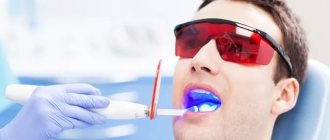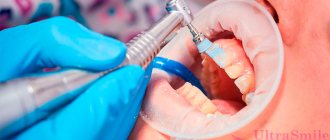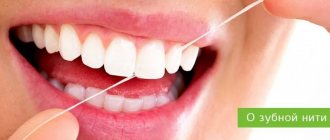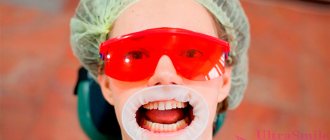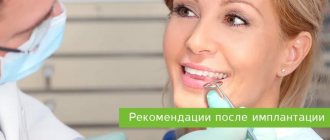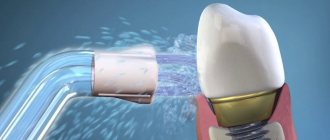What can you eat after cleansing?
After the procedure, dentists impose a number of restrictions on the patient’s eating behavior. In the first 2-3 days, foods that irritate tooth enamel are excluded from the diet: sour, hot, salty, sweet. The sensitivity of teeth after ultrasonic cleaning of stone is increased: bright tastes and temperature changes provoke pain.
Products containing dyes are prohibited. The list of what not to eat after brushing your teeth for tartar includes:
- black tea and coffee;
- colored carbonated drinks;
- chocolate;
- soy and balsamic vinegar;
- mustard and curry spices;
- red wine and grapes;
- berries (blueberries, blueberries, currants);
- red and orange vegetables;
- sweets containing dyes.
A number of products are recommended for consumption. They strengthen tooth enamel and prevent the formation of plaque and caries. Dentists advise eating dairy products in any form. Fruits and vegetables, particularly apples, reduce the amount of tartar. It is useful to drink diluted apple juice, which dissolves plaque.
Ultrasonic teeth cleaning: contraindications
However, like any other medical procedure, ultrasonic teeth cleaning also has a number of contraindications. Please read them carefully.
The use of ultrasonic scalers is excluded in patients:
- having implants;
- having orthopedic structures;
- suffering from cardiac arrhythmia;
- those suffering from asthma, endocarditis, chronic bronchitis;
- with colds;
- with hypersensitive teeth;
- those in adolescence and childhood;
- belonging to risk groups - hepatitis, tuberculosis, HIV.
When can I eat
There is no prohibition on eating food immediately after the procedure. You can eat almost immediately, but you will have to take into account that for the first 2-3 days you need to avoid foods that can stain your teeth.
The fact is that during professional cleaning, a protective film is removed from the surface, the restoration of which occurs in about a couple of days. However, many doctors insist on following a certain diet for a week.
A ban on certain products with coloring properties is introduced for the next 2 days after the procedure. At this time, it is better to limit yourself to drinking clean water and consuming neutral-colored foods that cannot stain the enamel of the affected tooth.
It is important to remember that after each meal you need to rinse your mouth thoroughly or brush your teeth. If there are fractions stuck between the teeth, you need to use a special thread.
How long should you stick to the diet?
It is advisable to observe the restriction on this list for at least two weeks until the protective layer of tooth enamel is restored.
In the future, consume foods with dyes, but in small quantities. If it is not possible to completely give up products with dyes, a slight deviation from the diet is acceptable, but only from the fourth day after teeth whitening. After eating foods and the list of restrictions, you should immediately brush your teeth and use a mouthwash.
The longer you manage to follow a white diet, the longer your teeth will remain snow-white. After whitening, teeth become even more sensitive to pigments, so dentists advise not to overuse products rich in dyes to maintain the effect.
Pros and cons of ultrasonic teeth cleaning
The method of removing stones using ultrasound has the following advantages:
- does not take much time (about an hour on average) and does not require special preparation;
- causes minimal discomfort to the patient; in difficult cases, it is performed under local anesthesia;
- removes tartar with maximum effect;
- removes tartar under the gums;
- immediately after ultrasonic cleaning, a feeling of freshness appears in the oral cavity;
- prepares teeth for further treatment;
- the color of the enamel becomes noticeably lighter due to the removal of pigmented plaque;
- the structure of tooth enamel is not subject to mechanical damage and becomes stronger;
- ultrasonic teeth cleaning - effective prevention of caries and other dental diseases;
- affordable prices.
Despite such a long list of advantages, ultrasonic teeth cleaning has some disadvantages. Disadvantages include:
- the presence of a number of contraindications;
- in some cases, removing tartar from all sides is impossible;
- if the patient has sensitive teeth, local anesthesia is required;
- possible mechanical injury to the soft tissues of the oral cavity.
Contraindications
Contraindications to ultrasonic teeth cleaning can be both relative and absolute. To get rid of relative ones, the patient will only need time and patience. These include:
- age up to 18 years, when the enamel of primary and permanent teeth is not yet sufficiently hard and mineralized;
- taking immunosuppressive or corticosteroid medications;
- infectious and viral diseases;
- inflammation of the oral mucosa;
- diabetes mellitus during exacerbation;
- neoplasms of various etymologies.
In addition, there are contraindications in which ultrasonic teeth cleaning is prohibited. The fact is that ultrasound vibrations affect the heart and cells, disrupt the heart rhythm and speed up metabolism. Therefore, after the procedure, the patient’s condition may worsen, and the operation of the built-in devices may be disrupted. The service is contraindicated if the patient has:
- heart pathology, pacemaker in the chest;
- asthma, epilepsy, chronic bronchitis;
- bleeding disorders;
- oncological diseases;
- tuberculosis, HIV, hepatitis.
Note. Another relative contraindication is the presence of bridges, braces and implants. The fact is that braces disrupt the natural process of cleansing the oral cavity with saliva. As a result, a soft coating appears on the enamel. In this case, dentists usually recommend Air Flow - treating teeth with an aqueous solution under pressure. If tartar has formed, you can do local ultrasonic cleaning - in the area of \u200b\u200bthe gum pockets and on the back of the teeth. You cannot directly use a scaler on the teeth around the braces: the glue on which they are attached may be damaged.
Features of the procedure during pregnancy
During pregnancy, various physiological changes occur in the female body, which inevitably affect the condition of the teeth: the acidity of saliva increases, soft plaque and tartar form. The latter not only spoils the appearance of the teeth, but can also cause various diseases. For example, when tartar is located at the edge of the gum, a periodontal pocket may form in which food debris will accumulate, which can lead to the development of periodontitis.
Ultrasonic cleaning will help prevent such problems from occurring. This cleaning is considered safe even for pregnant women. Firstly, there is no evidence of a negative effect of ultrasound on fetal development. This is why routine ultrasounds are allowed. Secondly, there is no pain during the procedure. Thirdly, the risk of trauma to the oral cavity is minimized. In addition, another advantage of the service is the speed of the procedure. As a rule, the session lasts no more than an hour.
The safest time for ultrasonic teeth cleaning is the second trimester. It is during this period that it is best to schedule all necessary dental procedures. In addition, dentists recommend refraining from additional ultrasound procedures in the first trimester of pregnancy, since during this period the main organs and systems of the fetus are formed.
Before the procedure, the patient must inform the dentist about pregnancy and tell its exact date. The fact is that during pregnancy, ultrasonic teeth cleaning is carried out only with the help of a professional scaler without the use of complex medications and anesthesia. Moreover, in this case, the doctor will be able to minimize the patient’s discomfort and give recommendations on oral care, taking into account the stage of pregnancy.
Stages of ultrasonic teeth cleaning
Stage 1. Examination of teeth to assess their condition and determine the need for anesthesia, preparation for the procedure - the dentist applies a special solution to the patient’s lips and then puts a mouth opener on it.
Stage 2. Removing dental plaque using an ultrasonic system - scaler. The water that is supplied during the session is removed from the oral cavity along with soft plaque and saliva using a special instrument.
Stage 3. Grinding and polishing enamel with brushes and pastes to give it an ideal gloss and create an anti-plaque surface. After this procedure, the enamel becomes smooth and shiny, and plaque does not appear on the surface of the teeth.
After the procedure, the dentist will give detailed recommendations for dental care and invite the patient to make an appointment in advance for repeated cleaning in 4-6 months in order to maintain the condition of the teeth and soft tissues in ideal condition.
Post-procedure care
There are special recommendations that must be followed after the procedure.
- Do not consume food or liquids containing dyes. For example, lemonades, juices, coffee, chocolate, berries, red wine, tomato juice, carrots and beets. You should avoid any pigmented foods for several days.
- Include fruits, vegetables and dairy products in your diet. The former will reduce the risk of plaque formation on the surface of the teeth, and the latter contain calcium, which is an important component of the hard tissue and enamel of teeth.
- Avoid smoking for at least a day. In the first two days, the enamel is restored after cleaning; if you smoke, it may return to a yellow tint.
- Brush your teeth with a soft brush 2 times a day after each meal. After this period, replace it with a medium-hard brush. Use a toothpaste for sensitive teeth. If you are unable to brush your teeth, you can rinse your mouth.
- Use additional oral hygiene products: floss, irrigators and dental floss. They will allow you to clean hard-to-reach places that cannot be reached with a toothbrush. Also, do not forget to clean the surface of the tongue, where a large number of bacteria also accumulate.
Follow these tips, and the results from brushing your teeth will last from 3-4 months to six months.
Possible complications
The most common complications after the procedure are inflammation of the gums, increased sensitivity of the teeth and damage to the integrity of the oral mucosa.
- Inflammation of the gums can occur due to diseases that were not cured at the time of teeth cleaning. To quickly relieve the inflammatory process, the dentist will prescribe antibiotics and suggest rinsing your mouth with herbal rinses.
- Increased sensitivity is a normal reaction of teeth to professional cleaning. However, normally it lasts no longer than one week. If the discomfort does not go away, the dentist may prescribe fluoridation of the enamel. This procedure involves applying gels and varnishes with a high concentration of fluoride and calcium to the surface of the teeth.
- Damage to enamel occurs extremely rarely; this may be due to the individual characteristics of the body or the doctor’s insufficient qualifications.
Clinical researches
An analysis of the clinical effectiveness of the use of various therapeutic and prophylactic agents of the Asepta series, carried out in Novosibirsk, at the State Budgetary Educational Institution of Higher Professional Education "Novosibirsk State University", confirmed that the line is different:
- Pronounced hygienic;
- Anti-inflammatory;
- Hemostatic property.
The study examined the effect of the products on the oral health of adolescents, patients with the most sensitive tissues and with pain in wisdom teeth. The use of pastes, balm with propolis and rinse demonstrated an improvement in clinical indicators and confirmed high efficiency in the treatment of periodontal pathology in patients of different ages.
